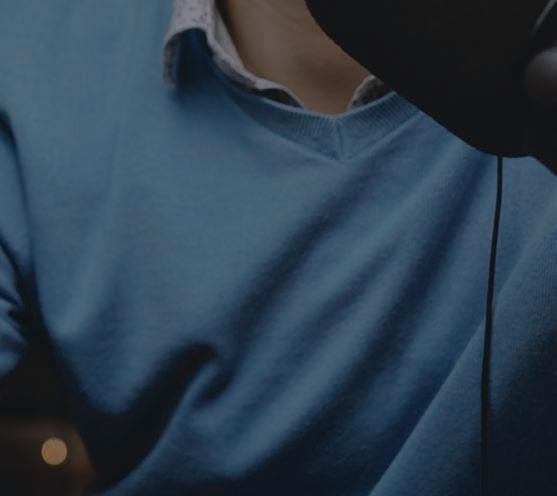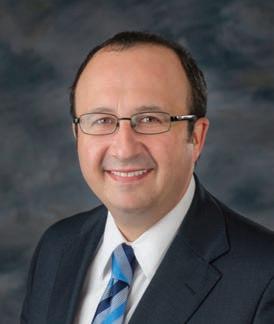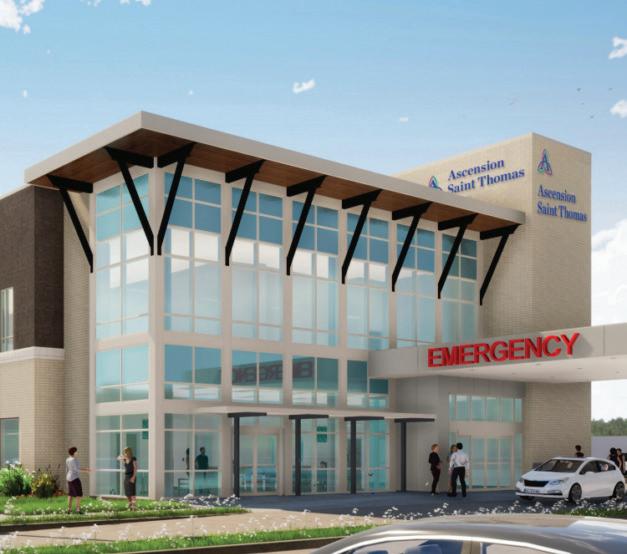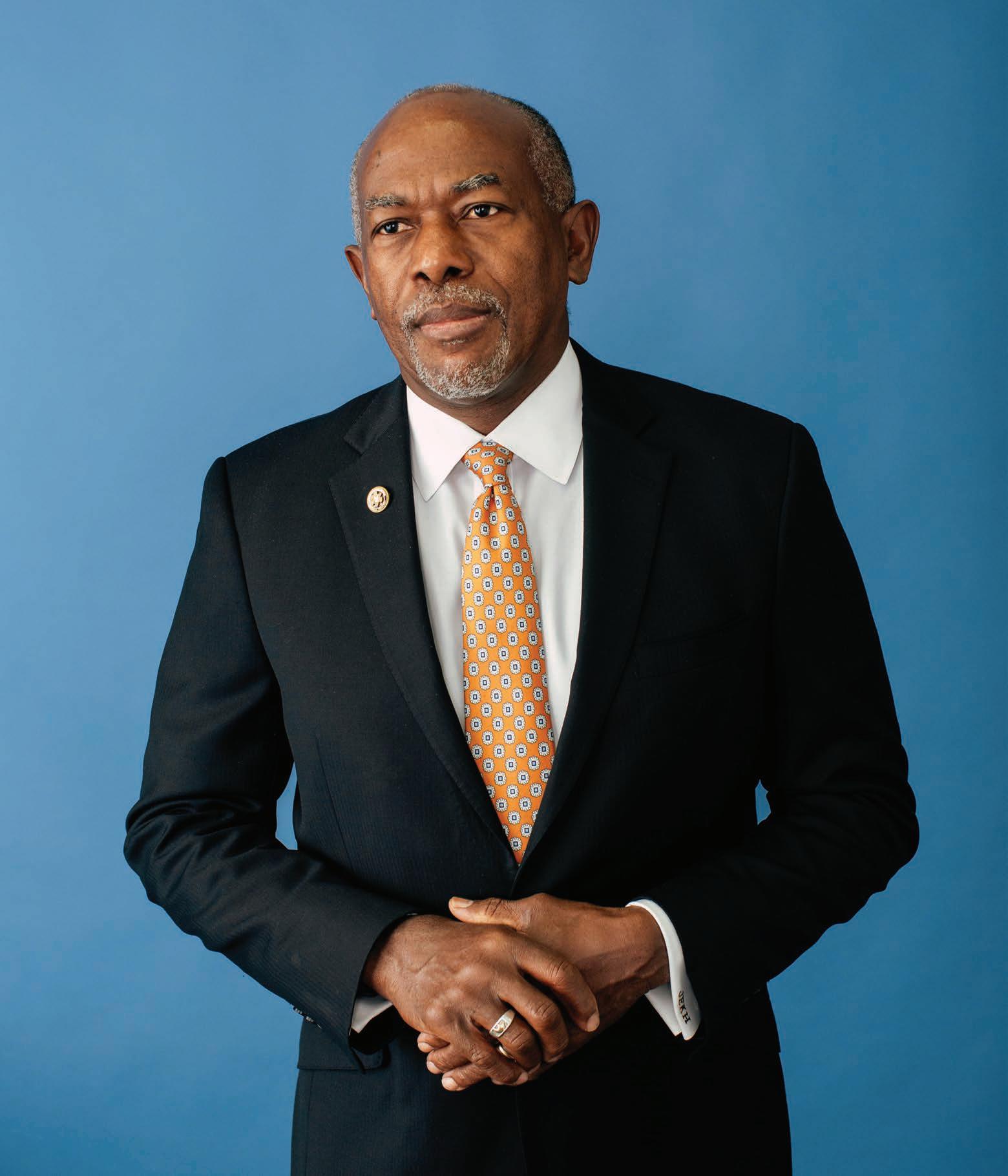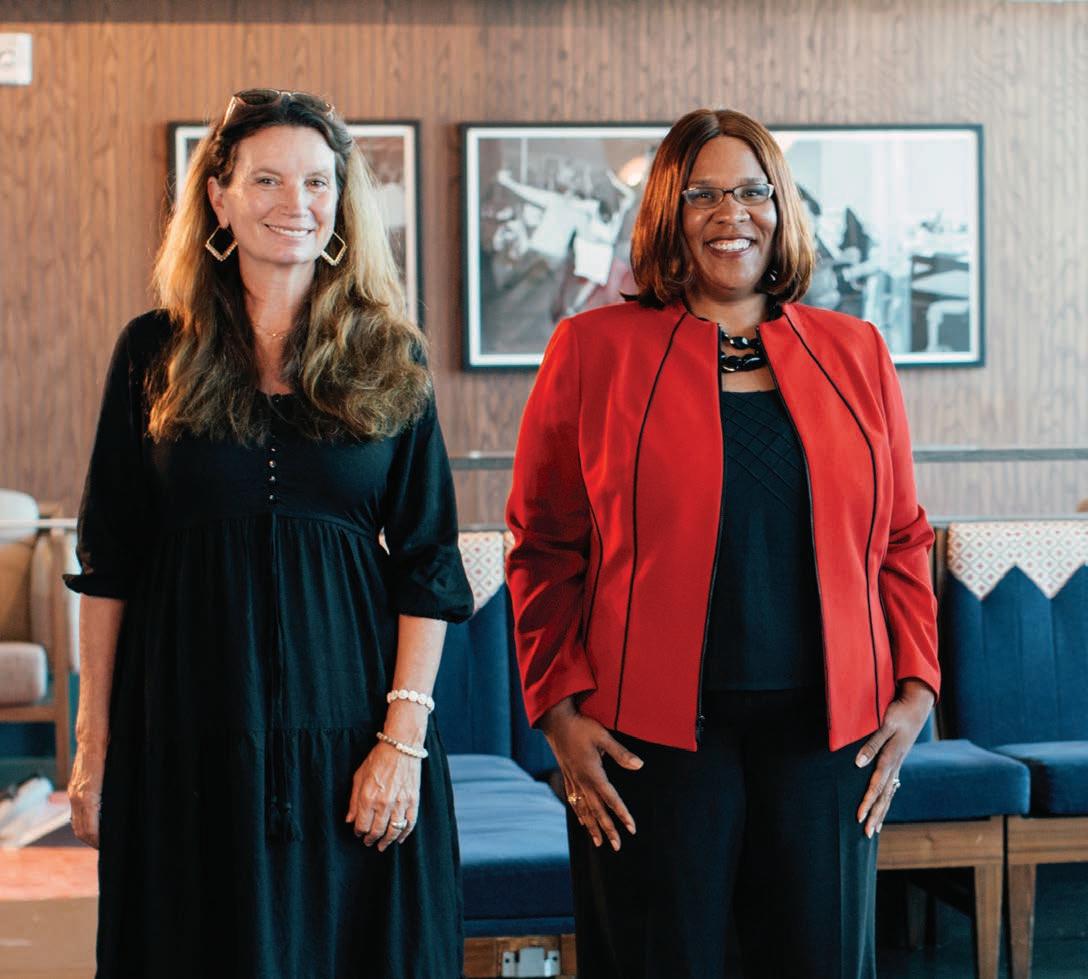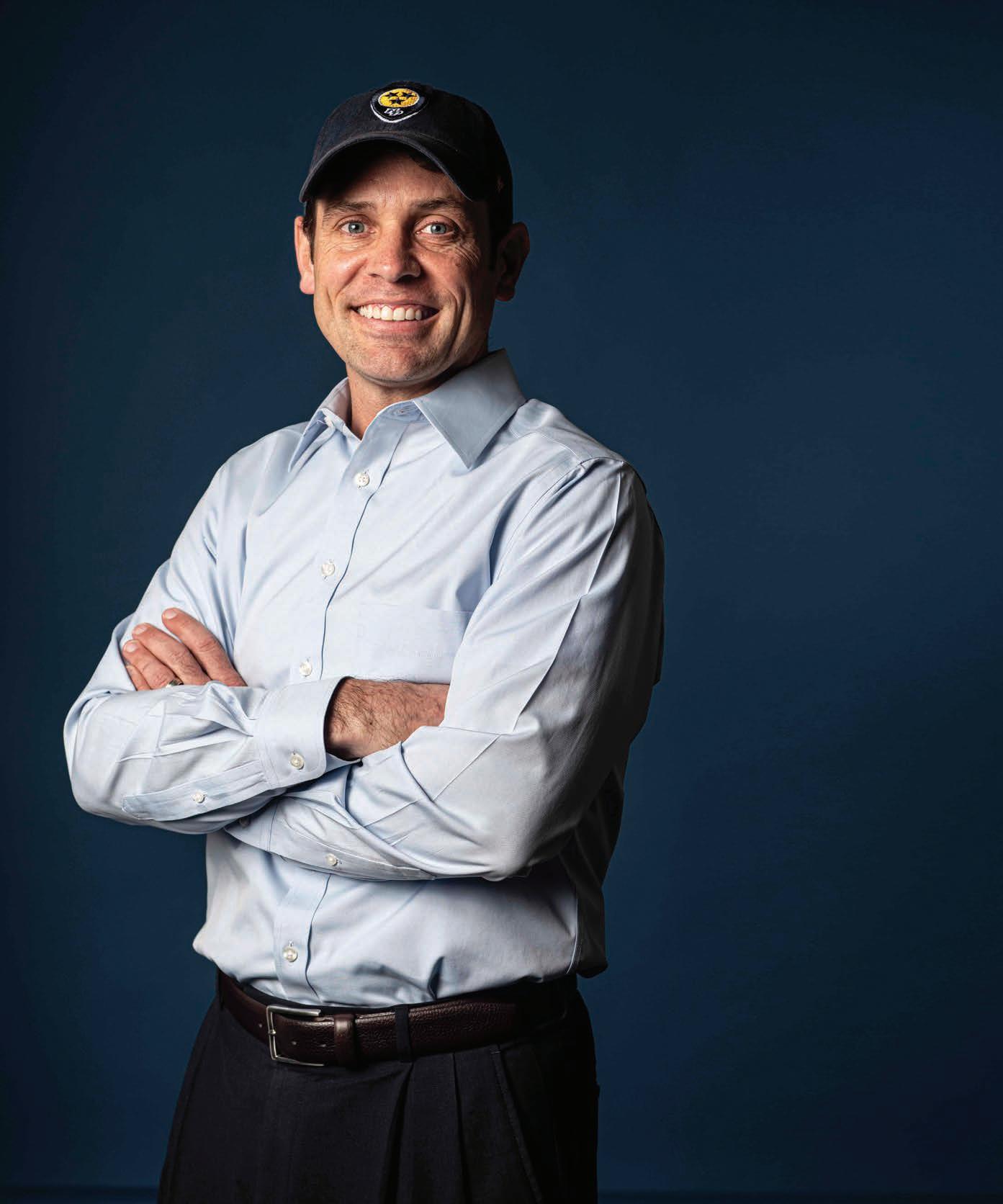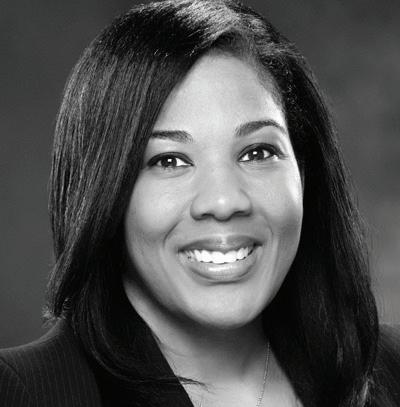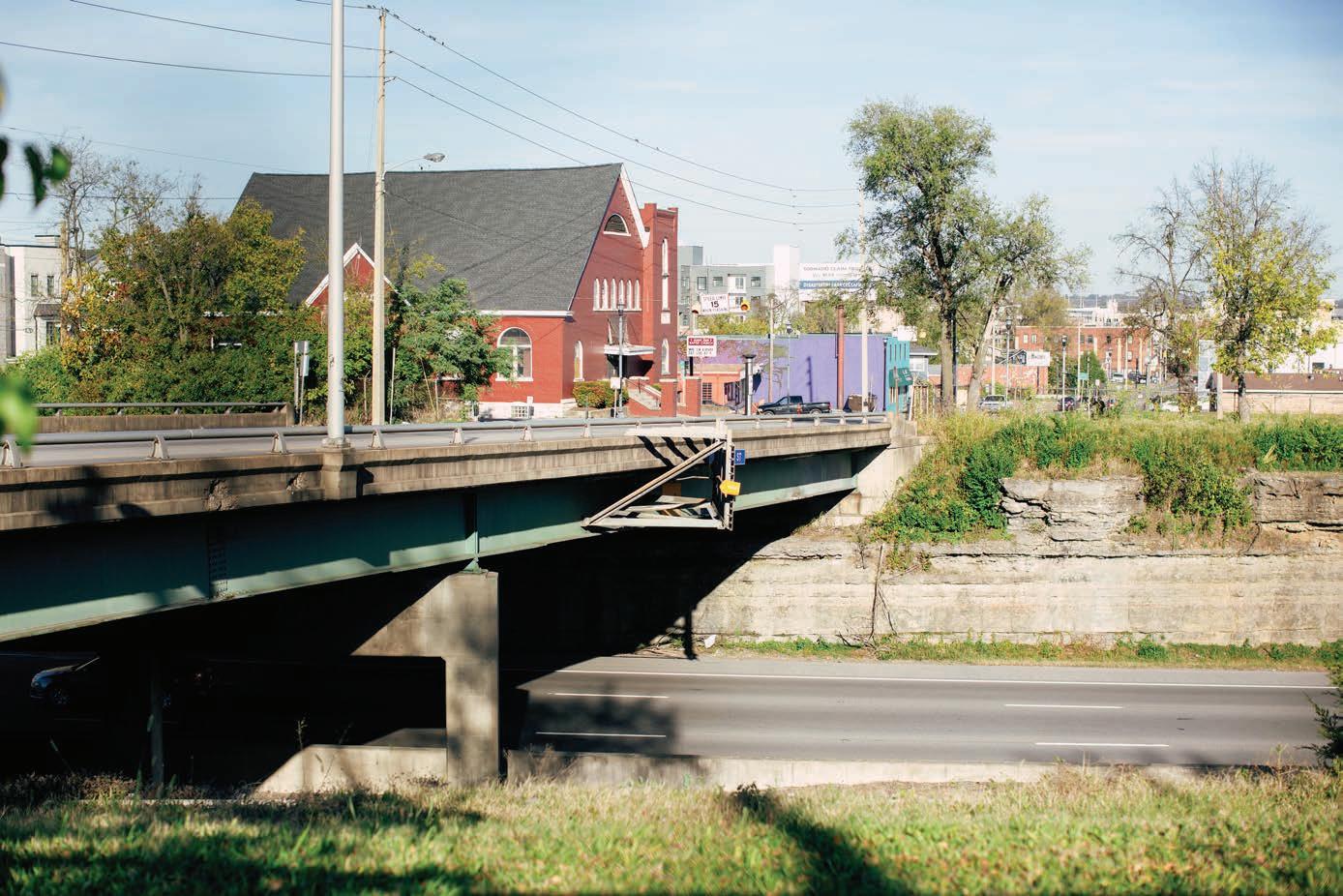
15 minute read
WILLING TO ADOPT
A need and a willingness to adopt

Advertisement
Three pros discuss the rise of virtual reality in health care settings
few years after rst being oated as a
A game-changer for some elements of health care, virtual reality technologies are coming into their own. To take stock of the landscape and trends, the Post in October convened a panel featuring HealthStream Senior Vice President Trisha Coady, BehaVR founder and CEO Aaron Gani and Jumpstart Foundry Managing Director Eller Mallchok. Here are some excerpts, edited for clarity and brevity, from that conversation, which was moderated by Editor Geert De Lombaerde.

DE LOMBAERDE: Aaron, tell us a little bit about BehaVR, its origins and where things have come from in the last couple years.

GANI: Happy to do it. So I founded BehaVR in 2016. At the time, I was in the Nashville Health Care Council Fellows program, a great program led by Senator Bill Frist and Larry Van Horn from Vanderbilt. At the time, I was the CTO at Humana and had been harboring this desire to start my own business. I had come to believe through my Humana years that we have huge gaps in how behavioral health care is accessed and delivered in the U.S. and globally. I also knew that, in 2016, virtual reality was going from being something that had been in largely lab and research settings and was coming out of that setting to be practical in a real-world sense.
And what we have is a company that delivers general wellness programs and digital therapeutics programs in the future that focus on stress, anxiety and fear extinction. We have two main products in the market today: one around chronic pain and then our just-launched NurtureVR Program for maternal mental health.


DE LOMBAERDE: Trisha, HealthStream made news earlier this year with a partnership with another big local health care name, Community Health Systems, to work on VR in resuscitation training. Can you walk us through that and what you’ve learned in the months since?
COADY: Yes, so we’ve been providing resuscitation or CPR programs to our health care organization customers for 10-plus years and we launched a second resuscitation program with the American Red Cross last year. And knowing that there was a 42-percent disparity in post-cardiac arrest survival across the U.S., we wanted to address that through innovation and experiential learning. As a consumer, I want to know that if I went into cardiac arrest, my chances of survival are just as good in Tennessee as they are in California or Idaho.
One of the key goals of the health care team during a cardiac arrest is that of a team leader who e ectively coordinates all care provided to the patient. It’s a pretty vital role if we want to improve outcomes. With CHS, we spent a few days there with a number of clinicians, piloting our VR scenarios and received really great feedback. One was, “It really felt like I was in the room with the patient and as close as I’ve gotten to a real-life scenario. It really helped me to master the coordination of care.” So with a certain number of things, VR is extremely powerful.

DE LOMBAERDE: Eller, in terms of representing investors but also looking at the end markets that these technologies can go to, how have you seen VR grow into the market? MALLCHOK: A few years ago, there was so much hype and so much excitement about it. And really, over the last year — and particularly with COVID — [there has emerged] a big need for virtual training and virtual learning. ere’s no question people are struggling with behavioral health and mental health issues. And I think any sort of virtual experience can help alleviate some of the isolation that people are feeling through COVID, through all this time quarantining and being at home. So there is not just a need for it, but there is now more of a willingness to adopt it. e pandemic has forced us to adopt virtual engagement.


DE LOMBAERDE: What are the objections from patients as well as from users? Aaron, have you seen those walls break down? Have attitudes changed?


GANI: De nitely, they are changing — and have changed a lot even since 2016. Probably the most frequently mentioned thing is, “Well, I’ve heard that some people can get nauseous or there can be some sort of simulator sickness in VR.” And the short response to that is that, with the technology that has come to market in the last few years, you have the processing power on board these headsets to keep the refresh rates well beyond the point where they cause that discomfort. e other major concern that gets voiced is more on the operational side. How do I deploy headsets? It’s one thing if you’re doing it in an enterprise setting, in o ces or hospitals. at’s relatively straightforward these days. What if you want to go out to thousands or hundreds of thousands of homes, as we do? at has gotten a lot better in the last 18 months or so. Now we can ship a headset to a patient’s home, you unbox it. It’s completely managed: You power it on, it’s in our application, you cannot screw it up.
We can say to a sponsor of care: For a simple per-member-per-month fee, we’ll put a headset in a patient’s home. ey can control it from their own smart phone and o they go. It’s getting better by leaps and bounds every six-to-12 months.
DE LOMBAERDE: Trisha, are you seeing a similar dynamic?
COADY: I de nitely agree with Aaron. And I think with the recent onset of Oculus Quest and its untethered devices, we’ve seen it dramatically improve in terms of the user experience and the ability to deploy. A lot of our health care organization leaders are really excited about VR — largely because they either can’t a ord to set up a sim center or they have a sim center but are thinking about how to scale experiential learning.
DE LOMBAERDE: Eller, where do you get the sense that VR is in terms of adoption in terms of the classic baseball innings analogy?
MALLCHOK: I still think we’re in early innings. at said, we’re not in the rst inning anymore. We’re well beyond that, maybe the fourth inning if I really had to pick one. I think it’s o the ground. As Aaron mentioned, the delivery to individuals en masse is de nitely taking place. COVID probably accelerated the adoption of that; the current environment in our world is accelerating people.
DE LOMBAERDE: Trisha, what’s your answer in terms of baseball innings?
COADY: I would say the second or third inning, maybe. We’re really beyond the very introductory phase of VR applications but there is still a lot of discovery that we’d like to do. We’re seeing a lot of VR technology evolve at a fairly rapid pace. And we’re still learning, testing, getting feedback as we go.
We really set out to make sure that we were leveraging the modality purposely and where it’s bene cial. Some people think, “Well, I’m just going try this new technology and apply it to everything.” And I don’t think that’s true. I think there’s a very speci c purpose to VR.

AARON GANI, BEHAVR
DE LOMBAERDE: You mentioned the upfront costs, especially in the hardware. Is that an obstacle that you found that has kept some people away?
COADY: No. I don’t think it’s an issue at all. Now, with the portability of it, it’s extremely cost-e cient. I’m replacing not only a course development — a piece of knowledge that I have to run through — but I’m also replicating or enhancing this live simulation experience. We have a lot of peer-to-peer tech learning in the eld.
GANI: Let me nerd out for a second on this question of what inning we’re in. is is a PECO G2 headset. ere are a couple of things related to this headset that are really going to continue to change rapidly over the next few years.
One is the bulk of this unit. e reason it’s so thick is mainly about the optics. ere is a thin digital display in there but you still need some depth in the optics to expand the visual eld. ere are advances being made all the time that will make that thickness shrink so it will be much lighter-weight and more comfortable. e other thing is all of the computing power to render those graphics and do that real-time calculation of changing visuals. With 5G and edge computing, we aren’t so far away from the graphics rendering moving to the edge of the cloud. We’ll have something that feels much more like a regular pair of glasses. e optics are going to allow the lenses to be much thinner and we can o oad the graphics processing.
DE LOMBAERDE: Here’s a question that has come in: What is the experience like for the patient and the provider? How good is the quality?
COADY: e pilot testing that we did with the nurses and physicians that we worked with at CHS said that it was as close to real-life as you can get. And you really were able to get or to generate emotion. It feels very immersive. It really helps you to feel like you’re in a three-dimensional universe and that you’re getting all this information, the sounds, all the stimulation.
And that’s where situational awareness is very, very key in health care, in terms of reacting and dealing with multiple scenarios. In the one that we’re working with for cardiac arrest, I’m seeing the beds and I’m seeing the ve di erent nurses and EMTs and physicians around me. And I’m able to look at the monitor out to the side, and then able to react to all of these stimuli.
GANI: What’s the experience like? Virtual reality is extremely hard to describe. You have to experience it. I have shown 2-D videos of our experiences to investors and prospective clients many times and they never get it. You have to go inside because what happens in
VR is a multi-sensory simulation. Generally, it’s audio and visual and the way that we experience that is, of course, through the same sensory pathways that we experience real life. So our brains don’t distinguish it from reality. e other thing I’ll say about it is in terms of what kind of content you experience. It’s as varied as real life. ere can be gami cation. You can move around virtual spaces and engage with things. You can be more passive and watch an educational segment or you can watch real-world, 360-degree video. We do that for patient stories and narratives. at’s really all about building empathy and belief, and self-e cacy.
DE LOMBAERDE: One thing that I see VR contributing to that we’ve written about a lot at the Post is care becoming decreasingly decentralized. at one hospital campus is no longer the place you go. If this technology becomes increasingly good and increasingly affordable, we’re going to enable a lot of people to treat themselves better at home.
MALLCHOK: Yeah. And think of in-person treatments like group therapy and bene ts of having other people around you while you’re doing the hard work. Can you do that in a virtual setting? Absolutely. And I think people in some ways are getting used to that and are encouraged by it.
DE LOMBAERDE: And then you’re solving access problems, right? In rural areas and for folks who aren’t as mobile, you’re bringing the care to them the way that the system has really tried to do in a lot of di erent ways in recent years.
MALLCHOK: Exactly.
DE LOMBAERDE: inking about the pandemic speeding up the adoption of a lot of technologies, how are you as investors think-

ELLER MALLCHOK, JUMPSTART FOUNDRY
ing about the amount of money that might need to go to this to really take advantage of this demand?
MALLCHOK: We are really early-stage investors, coming in right as entrepreneurs and innovators are getting products to market. ere’s going to be a lot of money, particularly in Series A, being poured into VR and AR. We were talking before we went live about the cost to develop and deploy the actual technology. at’s falling but the cost to develop the virtual settings is very capital-intensive — which is why I think it’s going to take bigger rounds of funding to get really successful VR and AR companies stood up and competing.
Where I see Jumpstart Foundry really playing a role is with early-stage entrepreneurs coming up with di erent applications. But once you have that application stood up, you’re very quickly going to need to raise a lot more capital to deploy that technology — whether through a health system or direct consumer routes.
DE LOMBAERDE: Trisha, in terms of investing and budgeting in VR technologies, how are you all at HealthStream thinking about the next couple of years?
COADY: I think we’re probably in a heavier investment mode. Learning and development is really our space so we need to go deep, right? We were [focused on] AI last year and had been working on that for four years in a particular application with IBM Watson. Moving forward, AR might be great in anatomy and physiology or when you’re about to do a surgery. But where VR is much more ready for and useful is experiential learning. We’re going to continue to invest pretty heavily in this type of technology.
It takes a certain expertise to get to the right content, to get the right outcome. And so we’ve been talking with a lot of di erent organizations like Aaron’s to really try and drive at where that expertise is.
GANI: at’s a great point, Trisha, that I’ll sort of build on. At some level, we are certainly a VR company. We kind of baked it into our name, right? But that was really a function of the newness and makes it really clear to people what you’re trying to accomplish. But in fact, we’re not really a VR company. We are a behavioral health company. We’re using the medium of virtual reality in certain ways. And health care is still health care. You still have the multi-stakeholder landscape of payers versus providers versus consumers. And they all have sometimes aligned and sometimes misaligned incentives and interests.
And so to your question about capital: Certainly, some of it is in building the technological frameworks and underpinnings so we’ve de nitely invested a lot of time in our cloud platform that allows us to connect clinicians to consumers in real time. We’re now in our Series A raise and the next stage of our

TRISHA COADY, HEALTHSTREAM
company, and most of our capital will go into proving the e cacy and safety of these programs with clinical studies. From an FDA perspective, we’re very careful about saying this is education and engagement and skill-building. We’re not making claims about treating, curing or preventing. But for at least some of our products, that is in fact where we expect and hope to go. And that takes signi cantly more capital.
DE LOMBAERDE: My last question is about benchmarks and milestones. What’s a headline you want to see in the next year for VR in health care?
GANI: What I’d like to see — and I think we will see — is digital therapeutics recognized as a reimbursable bene t category. at will be a big deal.
MALLCHOK: And the push for policy on that is happening right now. Once they can tie breakthrough technologies to CMS reimbursement, that’s going to be the big-ticket item. People are going to adopt it because they know they are going to be reimbursed for it. So follow the money on that one.
DE LOMBAERDE: Trisha, did you want to jump in?
COADY: Yeah. For me and the health systems, I think COVID has really helped us in many ways to be more creative. We think about all the telehealth adoption that has been going on. e systems getting ready for that kind of virtualization of care are going to really bene t us to the point that we can start expanding in a number of areas that will bene t with VR.
Positive energy and camaraderie fuel the spirit of the region. Every day, people find new ways to take advantage of opportunities offered, to make something from nothing, to make their mark, to realize their dreams. At the center of this spirit is the Nashville Area Chamber of Commerce. Be a part of something great.
